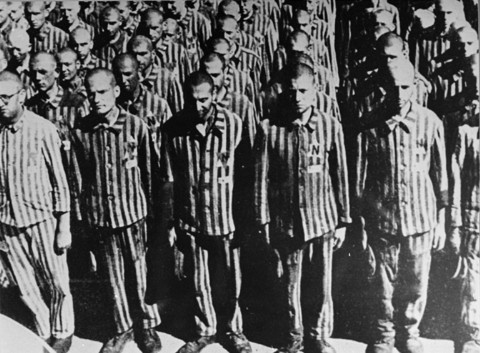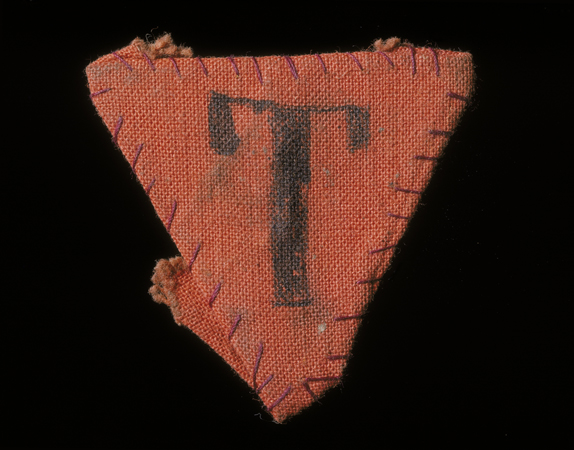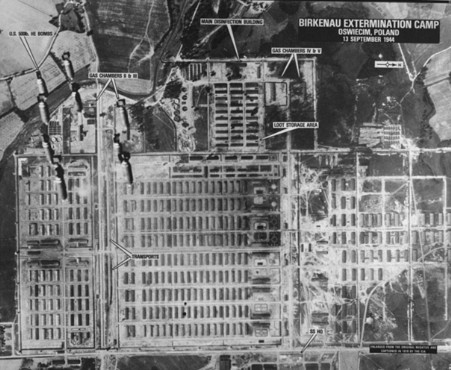Victims
Read for discussion in class:
• Richard Glazar, Trap with a Green Fence: Survival in Treblinka
[entire]
I. Discussion: Richard Glazar, Trap with a Green Fence
Chart: Flow Chart for "Operation T4"
Chart: Flow Chart for "Operation Reinhard," Auschwitz, and Majdanek
Map: Belzec, December 1942
Map: Sobibor, June 1943
Map: Treblinka, ca. August 1943
Map: Auschwitz-Birkenau, August 1944
Map: Auschwitz I, II, and III
Map: The Auschwitz Camp System
Aerial Photo: Auschwitz-Birkenau, 13 September 1944
Aerial Photo: Auschwitz-Birkenau, 21 December 1944
Image: Blueprint for Birkenau Krematorium (Autumn, 1941)
Aerial Photo: "Krematorium II" and "Krematorium III," 25 August 1944
Photo: "Selektion" in Birkenau, ca. June 1944
Photo: "Selektion" in Birkenau, ca. June 1944
Photo: "Selektion" in Birkenau, ca. June 1944
The "Auschwitz Album" (Yad Vashem)
II. Nazi Persecution of Sinti and Roma
A. Weimar Antecedents
B. Nazi Persecutions: Racial Doctrine
C. The Romani Path to Auschwitz
1. Derivative Persecution (1933-1936)
2. Centralization and Definition (1936-1941)
3. Porrajmos (1941-1945)
C. Persecutions from Below
Image: Dr. Robert Ritter Interviews a Romani Woman (late 1930s)
Image: Race Anthropologist Eva Justin Measures a Romani Woman (1938)
Image: Deportation of Sinti and Roma from Asperg, 22 May 1940 (1)
Image: Deportation of Sinti and Roma from Asperg, 22 May 1940 (2)
Image: Deportation of Sinti and Roma from Asperg, 22 May 1940 (3)

Dutch Jews wearing prison uniforms marked with a yellow star and the letter "N", for Netherlands, stand at attention during a roll call at the Buchenwald concentration camp. On February 28, 1941, 389 Jewish prisoners from Amsterdam and Rotterdam, many of them working class longshoremen, arrived in Buchenwald. All were immediately sent to work in the quarry and on construction projects, which led many to soon fall ill from exhaustion, exposure, and poor diet. This photograph was taken on the day of their arrival. Image source: USHMM, courtesy of the Gedenkstätte Buchenwald.
An aerial reconnaissance photograph of the Auschwitz concentration camp showing the Auschwitz II (Birkenau) camp with bombs descending. The photograph is one of a series of aerial photographs taken by Allied reconnaissance units under the command of the 15th U.S. Army Air Force during missions dating between April 4, 1944 and January 14, 1945. The photos were used to plan bombing raids, determine the accuracy of bombing sorties, or make damage assessments. This photograph was taken on 13 September 1944.The bombs visible in this picture were not intended for the Auschwitz-Birkenau camp, but aimed at the Monowitz sub-camp, site of a large synthetic rubber factory. Image source: USHMM / National Archives.
Chart: Prisoner
Markings in the Concentration Camp System
Chart: Number of Concentration
Camp Inmates, 1933-1945
| Image:
Red triangle patch worn by the Czech political prisoner Karel
Bruml in Theresienstadt. The letter "T" stands for Tscheche
(Czech) in German. Bruml was born to a Jewish family in Prague,
deported to Theresienstadt in 1941 and liberated in Bergen-Belsen
in 1945. Image source: USHMM, courtesy
Charles Bruml. |
 |
